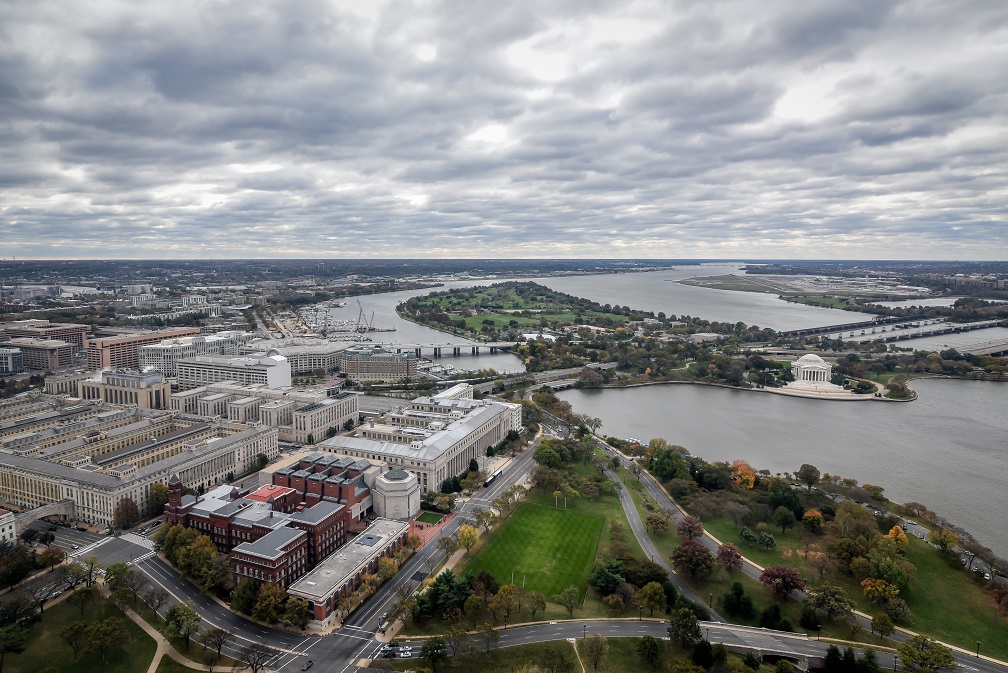Making the most of visiting the Smithsonian with kids this spring


By Eileen Ogintz
Tribune Content Agency
Are you ready to reach out and touch the moon?
Well, a little piece of it anyway — at the National Air and Space Museum, the most popular of the Smithsonian’s 19 museums and which, incidentally, is the world’s largest museum, research and education complex. Maybe you want to see the new portraits of President Obama and first lady Michelle Obama at the National Portrait Gallery, conquer your fear of bugs at the O. Orkin Insect Zoo at the National Museum of Natural History or at the National Museum of American History check out the real Star-Spangled Banner — the one that inspired Francis Scott Key to write the national anthem. You will want to show kids the contributions African Americans have made to this country at the National Museum of African American History and Culture. Let’s not forget those giant pandas at the National Zoological Park.
So much to see! Of course you are overwhelmed. And you aren’t alone. The Smithsonian Museums, particularly Air and Space, Natural History, American History, the African American Museum and the National Zoo are on every family’s must-see list when visiting Washington, D.C. The Smithsonian gets some 30 million visitors a year.
The good news: They are all free, open every day and there is plenty for kids of all ages. The bad news: They are so big that it is impossible to see everything, and they can be crowded, especially in spring and summer when there are big crowds, like during The National Cherry Blossom festival, which lasts until mid-April.
The other good news: As many times as you may have visited, you are likely to see something new as only 2 percent of the museums’ vast collections are exhibited at one time. (The new edition of my “Kid’s Guide to Washington, DC” can help make the most of your visit.) And since the museums are free, you can go play for a while on the National Mall and return later.
(The exception may be the National Museum of African American History & Culture which is so popular (it opened in September 2016) that getting timed passes in advance is recommended. (Here is what I wrote about my first visit.) (NOTE: The museum has also announced Walk-Up Wednesdays for the entire month of April 2018. Individuals who walk up without timed-entry passes may enter the museum on a first-come, first-served basis Wednesdays, April 4, 11, 18 and 25. Walk-up entry is subject to building capacity. The museum already has issued advance timed passes for the entire month of April. Individuals who already have advance timed passes will receive priority entry.)

Spend time planning your visit online with the kids. Not only can you zero in on exhibits that interest your gang, but you can download family guides and games for the kids that relate to what they will see. There is a special Smithsonian website for kids, and the Smithsonian Information Center in the iconic castle is a good place to start to decide where to go first and what special family activities to try.
Here is just sample of what to look for:
Blast off with GO FLIGHT at the National Museum of Air and Space. Its in-gallery interactive wall, re-envisioned website and a mobile app help visitors to see how aviation and spaceflight transformed the world. Download the Stuff for Kids and Museum Highlights guides or pick them up when you arrive. On designated family days, there are hands-on activities and the chance to meet pilots, astronauts and scientists. And look for the interactive Discovery Stations related to the exhibits.
Get a move on at the National Museum of American History with the Family Activity Guide to the wonderful “America on the Move” exhibit and download themed games where you can drive through time or even create a movie. The museum’s OurStory offers fun historic activities you can do at home. Take younger kids to the Wegmans Wonderplace where hands-on activities help them connect to the museum’s collections; For older kids, the Spark!Lab encourages them to become inventors. Stop at the interactive carts and don’t miss the Star-Spangled Banner where you can zoom over a virtual life-size image of the flag at the interactive table.
Meet the new male elephant, Spike, at the National Zoo. The zoo’s Elephant Trail exhibit offers a habitat that lets the elephants socialize, play and hopefully breed. Of course, you don’t want to miss the giant pandas at the Asia Trail exhibit. Daily programs include animal training, feeding demonstrations and keeper talks. Over the summer, check out the Kid’s Farm or cool off at the zoo by dipping your feet in the flowing waters of the American Trail Tide Pool, which features model sea stars, barnacles and more.
Be a citizen scientist at Q?rius in the Coralyn W. Whitney Science Education Center (for those 11 and up) and the Q?rius Jr discovery room (check for hours). Explore science, browse the collections and create your own field book at the Q?rius website before you visit the museum to check out rocks, bugs (ready to touch a cockroach?), the butterfly pavilion and, of course, the chance to walk through time to help understand America’s last dinosaurs.
Bring the sketch pads to the Hirshhorn Museum and Sculpture Garden and see how kids explore and experiment with contemporary art. Every week, the Hirshhorn hosts story time for kids (birth to 6), complete with sketching. Have you ever brought pieces of string to an art museum for kids to mimic the lines in a painting? Older kids and parents will enjoy “The Message: New Media Works,” a transformative journey through five contemporary film and video installations that use music, film and pop culture to reveal profound truths about life in the 21st century.
Where will you going first?
© 2018 EILEEN OGINTZ
DISTRIBUTED BY TRIBUNE CONTENT AGENCY, LLC.
